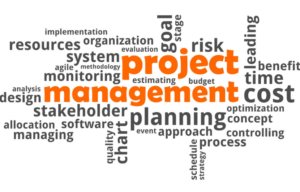Technology Espresso Consulting helps organizations reconcile traditional project management and Agile. Many companies have embraced Agile, which doesn’t have team project managers, but need more clarity about how to incorporate the pieces of project management that have helped them in the past without undermining the benefits they seek with Agile.

We at Technology Espresso Consulting understand this critical dilemma. We have been a part of software development for over 30 years, 20 of which have been implementing Agile. We have been certified in project management (PMP) for 20 years, as well.
For the last 20 years, we have embraced, helped transform, and helped optimize major Agile applications within organizations. So, we understand both worlds: traditional project management and Agile.
We also have actively seen full-scale implementations operating for over a decade, helping companies use the combination that will work for them:
- Remove Traditional Project Managers from the team level and repurpose them
- Convert Agile Project Managers with the right skill set into Scrum Masters
- Transition Agile Project Managers into the Program Management Office
- Utilize Agile Project Management at the Program Layer in line with the Scaled Agile Framework
- Transition Agile Project Managers into RTE roles in line with the Scaled Agile Framework
- Create a blended role taking on some of the Product Management and Scrum Master responsibilities such as impediments, stakeholder management, dependencies, and risk management
Which approach to take may be determined by the current makeup of the people on your team, their skill set, and even their desire to share that project management role.

There are some things we don’t recommend and can help you avoid repeating mistakes that have been made by others.
- Having Scrum Masters report to Project Managers
- Having the Scrum Team report to the Project Manager.
- Having the Project Manager be the liaison between the Product Owner and Scrum Master
- Having the Project Manager be the liaison between the Product Owner and the development team
- Having the Project Manager report the team status without buy-in from the Scrum Master and team
- Having the Project Manager intervene, make decisions, or give direct assignments to the team
- Having the Project Manager be the voice of the leadership, executives, or sponsors; that should be the Product Owners role
- Having the Project Manager evaluate the team and provide performance and productivity reports
We want to build environments where if there is Project Management, the teams are empowered and supported by Project Management.
Agile Project Management can ideally bring a lot of value to the development team and not undermine the Agile environment. Agile Project Managers can focus their time on looking ahead: forecasting, evaluating the metrics, helping to provide and inform across teams, Scrum of Scrums, informing stakeholders, and predicting the flow of work, ensuring a healthy pipeline of work based on the team providing them their data.
When you see an empowered team, along with an informed Project Manager, there is mutual trust. The outcome is that the team feels supported and not managed by the project manager. Then you’ll know that you have a successful formula.
We at Technology Expresso want to help you define that formula. Please contact us here at Technology Expresso Consulting.